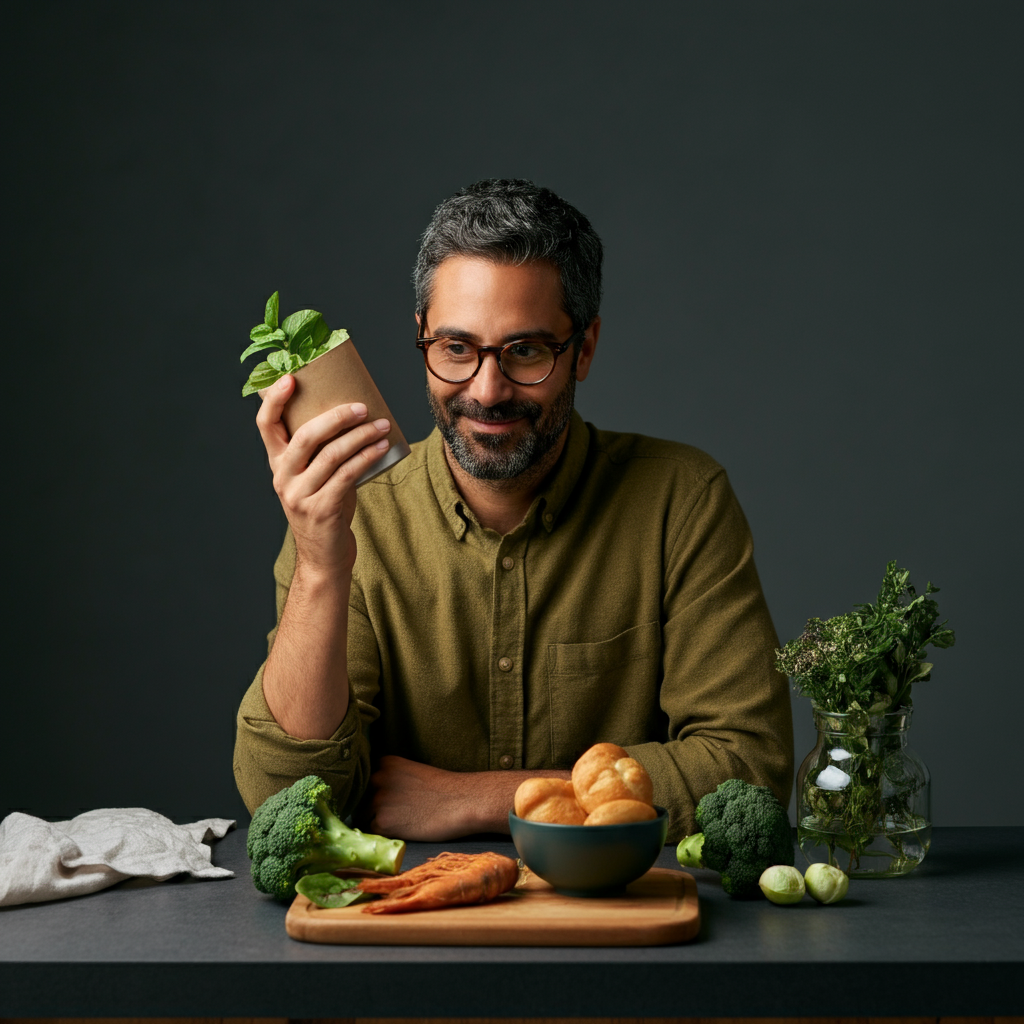Table of Contents
Overview of Oil Structuring Techniques
Oil structuring refers to the process of modifying liquid oils to mimic the physical and functional properties of solid fats. Various techniques have been developed to achieve this, including direct and indirect oleogelation methods as well as interesterification. Each method has its unique characteristics and applications, contributing to the versatility of structured oils in food formulations.
Direct Oleogelation Methods
Direct oleogelation involves the incorporation of gelators directly into the oil phase, resulting in a gel-like structure. This technique is particularly useful for creating oleogels that can replace solid fats in various food products. The most common gelators used in direct oleogelation include:
- Waxes: Natural waxes, such as carnauba and beeswax, are effective in structuring oils and have been shown to enhance textural properties in baked goods and spreads (Savchina et al., 2025).
- Monoacylglycerols (MAGs): These are lipid compounds that can self-assemble in oil, providing desired gel characteristics. Research indicates that MAGs can effectively mimic the functionality of solid fats while improving the nutritional profile of food products (Sivakanthan & Madhujith, 2020).
- Proteins and Polysaccharides: Ingredients like gelatin, hydroxypropyl methylcellulose (HPMC), and xanthan gum can also act as gelators, contributing to the stability and texture of oleogels (Feichtinger & Scholten, 2020).
Indirect Oleogelation Methods
Indirect oleogelation involves the creation of a gel through intermediary steps, often utilizing emulsions or foams to develop the desired texture. This approach can yield oleogels with superior properties compared to direct methods. Key techniques include:
- Emulsion-Templated Oleogels: This method utilizes emulsions as templates to form oleogels, allowing for the control of texture and stability (Palla & Valoppi, 2024).
- Foam-Templated Oleogels: By creating a foam structure and then saturating it with oil, this method results in oleogels with enhanced aeration properties, suitable for applications in baked goods (Sinha et al., 2024).
Interesterification-Based Methods
Interesterification is a chemical process that rearranges fatty acids within triglycerides, allowing for the modification of melting points and solid fat content. This technique has gained traction as a means of producing structured oils that can replace traditional fats in various applications. Key aspects include:
- Transesterification: This process involves the exchange of fatty acids between triglycerides and other fatty acids or alcohols, leading to the formation of new structured lipids that can enhance the texture and stability of food products (Danthine et al., 2014).
- Enzymatic Interesterification: Utilizing lipases, this method allows for more precise control over the reaction, resulting in tailored fat structures with beneficial health properties (Nicholson & Marangoni, 2021).
Applications of Structured Oils in Bakery and Confectionery
Structured oils have found extensive applications in the bakery and confectionery sectors, where they serve as effective substitutes for traditional fats. Their ability to mimic the textural and functional properties of solid fats makes them ideal for various formulations, including:
- Margarines and Spreads: Structured oils can replicate the consistency and mouthfeel of butter while offering a healthier lipid profile. For example, the combination of waxes and MAGs has been shown to create margarine-like products with desirable sensory characteristics (Hwang & Winkler-Moser, 2020).
- Baked Goods: The incorporation of oleogels in products such as cakes and cookies has been demonstrated to improve moisture retention, texture, and overall quality. Studies have shown that structured oils can enhance the volume and softness of bread while reducing saturated fat content (Espert et al., 2023).
- Confectionery Products: Structured oils are also used in chocolates and candies, where they help achieve a smooth texture and prevent fat bloom. Oleogels produced through interesterification can provide the desired melting characteristics and stability required in these products (Li et al., 2021).
Nutritional Benefits and Sensory Impact of Structured Oils
The nutritional profile of structured oils is one of their most significant advantages. By replacing trans and saturated fats with healthier unsaturated fats, structured oils can improve the overall quality of food products. Key benefits include:
- Reduced Saturated Fat and Trans Fat Content: Structured oils can significantly lower the levels of harmful fats in food products, contributing to better heart health and reducing the risk of chronic diseases (Sivakanthan & Madhujith, 2020).
- Enhanced Nutritional Value: Many structured oils can be enriched with beneficial fatty acids, such as omega-3 and omega-6, providing additional health benefits (Savchina et al., 2025).
- Improved Sensory Qualities: The sensory attributes of structured oils, including taste, texture, and mouthfeel, can be optimized to match or exceed those of traditional fats. This is crucial for consumer acceptance, as taste remains a primary driver of food choices (Savchina et al., 2025).
Challenges in Commercializing Structured Oils
Despite the promising potential of structured oils, several challenges hinder their widespread commercialization:
- Complexity of Production: The processes involved in oil structuring can be intricate and require specialized equipment, which may pose barriers for smaller manufacturers (Sivakanthan & Madhujith, 2020).
- Regulatory Hurdles: The regulatory landscape for novel food ingredients, including structured oils, can be complex and may slow down the approval process (Savchina et al., 2025).
- Consumer Perception: Some consumers may be hesitant to accept products with unfamiliar ingredients, making effective communication and education essential for market acceptance (Savchina et al., 2025).
Table 1: Summary of Oil Structuring Techniques and Applications
| Technique | Description | Applications |
|---|---|---|
| Direct Oleogelation | Incorporation of gelators directly into oil | Margarines, baked goods, confectionery |
| Indirect Oleogelation | Use of emulsions or foams for gel formation | Sauces, dressings, dairy products |
| Interesterification | Rearrangement of fatty acids in triglycerides | Shortenings, margarine, chocolate substitutes |
FAQs
What are structured oils?
Structured oils are modified liquid oils that mimic the properties of solid fats, providing functional benefits in food formulations while offering a healthier lipid profile.
How are structured oils made?
Structured oils can be produced through various methods, including direct oleogelation, indirect oleogelation, and interesterification, each involving different techniques and gelators.
What are the benefits of using structured oils in food?
Structured oils can reduce saturated and trans fat content, improve nutritional value, and enhance sensory characteristics in food products.
What challenges exist in the commercialization of structured oils?
Challenges include the complexity of production processes, regulatory hurdles, and consumer perceptions regarding unfamiliar ingredients.
References
-
Savchina, E., Grosso, A. L., Massoner, P., Morozova, K., Scampicchio, M. M., & Ferrentino, G. (2025). From liquid to solid: Exploring techniques, applications, and challenges of structured oils as fat replacements in food formulations
-
Sivakanthan, S., & Madhujith, T. (2020). Structured oils: A review on the potential of structured oils as healthier fat alternatives
-
Hwang, S., & Winkler-Moser, J. K. (2020). Properties of structured oils for margarine applications
-
Espert, M., Morell, P., & Bascuas, J. (2023). The structure of oleogels: A comprehensive review
-
Li, L., Wu, J., & Wang, Q. (2021). Enzymatic interesterification: A novel approach for producing structured oils
-
Palla, C. A., & Valoppi, F. (2024). Advances in oil structuring techniques: Trends and applications
-
Danthine, S., & Akoh, C. C. (2014). Interesterification: A tool for modifying fats and oils
-
Nicholson, J. W., & Marangoni, A. G. (2021). Glycerolysis of fats: New opportunities for food applications











